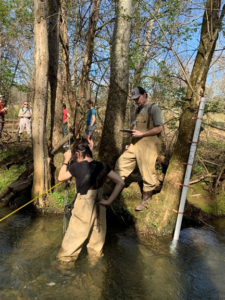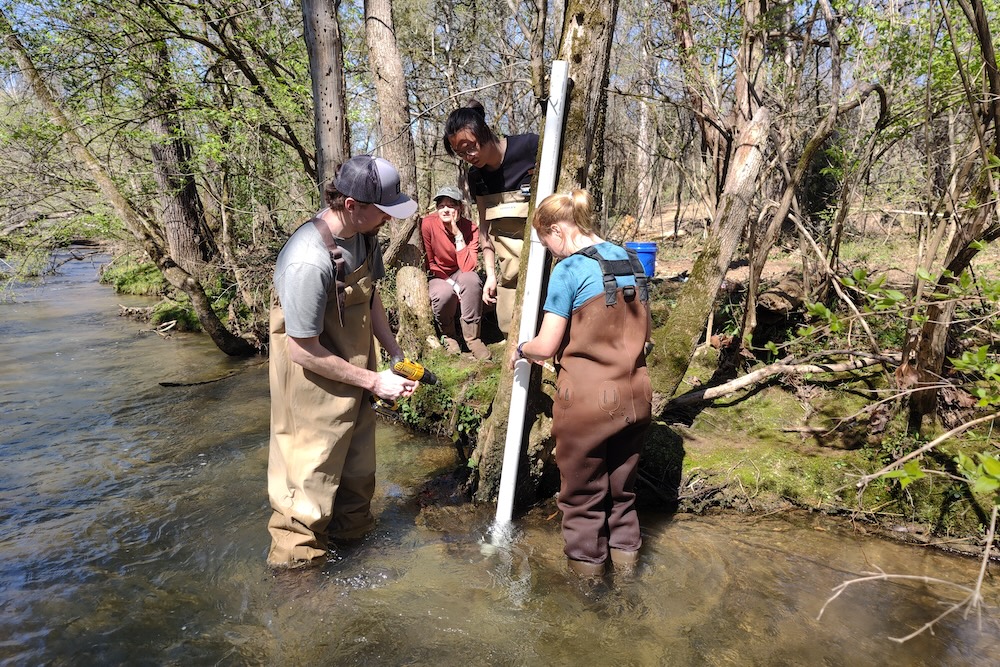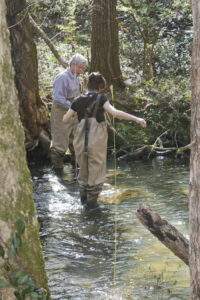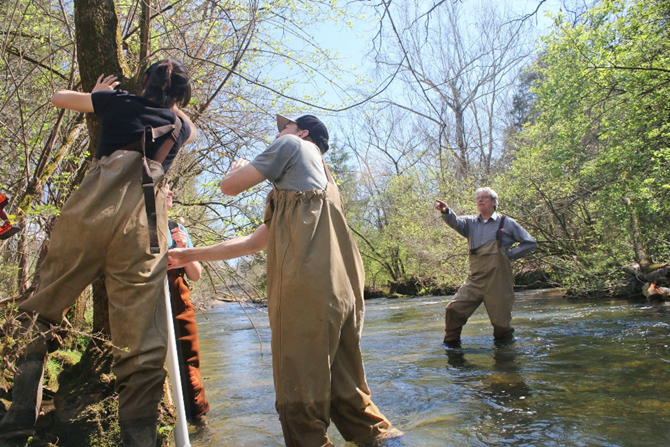Schwartz’s Students Help Upgrade Knoxville Water Quality—Again
Public water quality is not just about what comes out of our faucets. It also includes “raw” water before it is treated and piped into our homes, as well as the streams, rivers, and lakes across the state in which people swim, fish, and sail.
The Tennessee Department of Environment and Conservation (TDEC) maintains a list of waterways throughout the state that are impaired, or below acceptable water quality standards. Impairment can have a range of causes, such as excessive fine sediment due to riverbank erosion, high nutrients from overuse of fertilizers, toxic metals from stormwater runoff, and contamination with fecal bacteria like E. coli.

“High levels of fecal bacteria in recreational water, in particular, can lead to public health issues,” said John Schwartz, the director of the University of Tennessee’s Tennessee Water Resources Research Center and a professor in the Department of Civil and Environmental Engineering (CEE). “If we can remove the fecal pollution from our streams, then that makes swimming in them and playing near them safer.”
Schwartz has been a watershed management specialist for more than 40 years, working in the private sector before joining the UT faculty in 2003. He uses local impaired streams to create class projects that benefit both his watershed management students and the Knoxville community.
This spring, Schwartz’s class will be expanding on groundwork laid by student Vols in 2022 to improve the Turkey Creek Watershed, which is impaired due to contamination from both E. coli and fine sediment.
Local Communities Can Rely on Vols
When Schwartz was preparing for the spring semester in 2022, he contacted the Town of Farragut, Knox County, and the City of Knoxville to suggest having UT engineering students work on improving Turkey Creek.
“I didn’t have to do much convincing,” Schwartz recalled. “The local communities know that we have really good students, and they were really excited to work with the university.”

That semester, Schwartz guided 10 graduate and upper undergraduate-level CEE students in creating a Watershed Restoration Plan for Turkey Creek. This restoration plan format follows US Environmental Protection Agency (EPA) guidelines for projects that will improve water quality, thus making the plan eligible for state 319(h) funding under Section 319 of the federal Clean Water Act.
“What is really innovative about that class was being able to help the local population,” Schwartz said. “The students really liked the idea that what they were producing for their class project was something valuable—something that was actually going to be used.”
Students and Professionals Trading Expertise
While it would be preferable not to have impaired waterways at all, Schwartz is happy to leverage local waterway improvements to give students hands-on experience.
In the spring of 2022, he challenged his students to produce an EPA 319(h) approved watershed restoration plan, which is required for local governments and non-profit watershed associations seeking watershed restoration funding. Proposals for 319(h) funding must include detailed plans for restoring the watershed and maintaining a healthy, sustainable aquatic ecosystem.

His students were able to install a flow monitoring station at Turkey Creek, taking flow and water quality measurements that they used to perform watershed modeling. They also learned how environmental regulations are implemented through collaborations with experts from TDEC, the state’s Department of Agriculture, and governmental staff from Farragut, Knoxville, and Knox County.
In 2023, Knox County Stormwater Management used the Vols’ results and plan in its proposal to the Tennessee Department of Agriculture for 319(h) funding. In 2024, the county received $205,000 to restore the Turkey Creek Watershed.
Practical Work Improves Community, Job Preparedness
This spring semester, students in Schwartz’s Stream Restoration Design class will contribute to the restoration of Turkey Creek. Graduate and upper-level undergraduate students from across UT—including CEE, the Department of Biosystems Engineering and Soil Science, and the UT Institute of Agriculture’s School of Natural Resources—will build upon the Watershed Restoration Plan developed by Vols in 2022.
They will further investigate the factors contributing to the erosion of banks along Turkey Creek and develop detailed stream restoration designs for selected sections, such as the stream reach through Founder’s Park in Farragut, where bank erosion is particularly severe.

In addition to improving water quality, preventing erosion protects the plants and wildlife that live along the banks, enriching and stabilizing Knoxville’s local environment. This class will also give even more Vols hands-on experience in the type of work they will perform after graduation—and the impact an engineering degree can have on their communities.
“I take a very practical approach to education because I know that’s how my students gain the skill sets they need to market themselves really well to the private sector after graduation,” said Schwartz. “The most rewarding thing about this job is seeing our students go off and get really good jobs and lives.”
Contact
Izzie Gall (865-974-7203, egall4@utk.edu)
